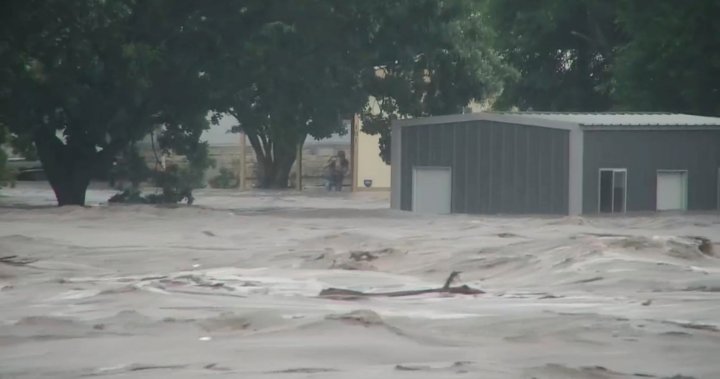A Montreal family was shocked to discover their photo being used in a fraudulent GoFundMe campaign claiming to raise money for Texas flood victims. The deception was uncovered when a friend texted Simone Rochon late Tuesday night with a screenshot of the fundraiser featuring her family portrait.
“I couldn’t believe it. There we were – my husband, our two children and me – supposedly a Texas family who had ‘lost everything’ in the floods,” Rochon told me during an interview at her Plateau Mont-Royal apartment. “We’ve never even been to Texas.”
The fraudulent campaign had already collected nearly $7,300 from 83 donors before being reported and removed from the platform. The scammer used the name “Jennifer Wilson” and claimed the family had lost their home in the devastating floods that hit parts of Texas last week.
GoFundMe confirmed they’ve suspended the campaign and are investigating. “We have zero tolerance for misuse of our platform,” said Stephanie Whittier, a spokesperson for GoFundMe. “We deploy proprietary fraud detection systems and have teams working around the clock to monitor campaigns. When we identify misuse, we move quickly to protect donors.”
According to the Canadian Anti-Fraud Centre, disaster-related scams have increased 43% over the past year. “Fraudsters opportunistically exploit crises, counting on the fact that people’s empathy overrides their skepticism during disasters,” explained cybersecurity expert Thomas Beaudoin from the Université de Montréal.
The family’s photo was likely scraped from social media, where Rochon occasionally shares family updates. “I never thought our Christmas card photo would be used like this,” she said. “It feels violating, like someone broke into our home.”
The Texas Department of Public Safety has reported over 200 fraud complaints related to the recent flooding. Lieutenant Maya Rodriguez from their cybercrime unit told me via email that cross-border scams present particular challenges. “When perpetrators operate internationally, jurisdiction becomes complicated. We coordinate with federal authorities and platforms like GoFundMe to track these cases.”
The Electronic Frontier Foundation has documented rising instances of identity theft for fraudulent fundraising. Their recent report “Digital Compassion Exploitation” notes that disaster-related scams have become increasingly sophisticated, with AI tools making it easier to create convincing narratives.
“What’s particularly troubling is how these scams not only steal from well-meaning donors but also potentially divert funds from legitimate victims who desperately need assistance,” said Rachel Greenfield, a digital rights advocate who has studied crowdfunding fraud.
For donors wanting to help authentic disaster victims, experts recommend several verification steps. “Always check if the organizer has a direct connection to the beneficiary,” advised Catherine Martin from the Canadian Red Cross. “Look for specific details about how funds will be used, and be wary of campaigns that only show stock photos or images that appear in multiple campaigns.”
I reviewed the cached version of the fraudulent page and noticed several red flags: vague descriptions of damage, no specific location details, and a conspicuous absence of any local Texas news links or documentation of the supposed damage.
GoFundMe has implemented a guarantee that refunds donations in cases of misuse, but prevention remains crucial. The platform now employs machine learning algorithms to detect suspicious patterns and requires additional verification for campaigns exceeding certain amounts.
“The technology to create convincing scams is evolving rapidly,” said Beaudoin. “We’re seeing more sophisticated approaches where scammers research real disasters, incorporate accurate local details, and create multiple false identities to make campaigns appear legitimate.”
For the Rochon family, the incident has prompted a review of their online privacy practices. “We’ve made all our social media accounts private now,” Simone explained. “It’s sad that sharing family moments comes with this risk.”
The Texas Division of Emergency Management encourages donors to verify fundraisers through their official disaster relief portal, which lists vetted organizations providing legitimate assistance to flood victims.
This case highlights the growing challenge of maintaining integrity in online crowdfunding spaces where emotional appeals can bypass critical thinking. As natural disasters increase in frequency due to climate change, experts predict these types of scams will continue to proliferate.
“The best protection is a pause before donating,” Martin suggested. “Take a moment to research the campaign, contact the organizer directly if possible, and when in doubt, donate to established relief organizations with transparent operations.”
If you’ve donated to a suspicious campaign, GoFundMe recommends reporting it immediately through their platform and contacting your credit card company to dispute the charge.






